
Content
Welcome to the Club of Amsterdam Journal.
Watch the new edition of The Future Now Show: Hardy comments
Felix F Bopp, Founder & Chairman
Small Data – Big Impact



By Ahmed Elmagarmid, Peter Cochrane and M Ouzzani, Qatar Computing Research Institute
SUMMARY
The mining and analysis of data has been dominated by ‘the big’ looking at ‘the small’ – businesses, institutions and governments looking at society with an eye to welfare, security and commercial opportunities on a macro scale [1]. Big Data is expanding this into the arena of networking and association with a focus on more relational services, advertising, ‘pre-selling,’ healthcare, security, and tax avoidance [2]. But this still leaves the critical arena of Small Data unaddressed – the small looking at the small – individuals and things examining and exploiting their own data [3].
Personal health/care, purchasing and consumption provide prime examples; our food, physical activity, bodily response, and medical histories constitute a catalogue of valuable information [4]. The electronic tagging of foods, wearable health monitors, mobile apps, and the increasing number of test devices in our bathrooms are creating predictive environments involving everything we own and do to profoundly impact the way we live.
Here we assess a near term future of tagging, sensing and monitoring allied with net-worked association afforded by the IoT (Internet of Things) to identify migration paths to a fuller integration. We conclude that many devices will store (small) data and talk to each other at close range with little (or no) internet connection. We also suggest that the future will see more network connections generated between things than those on the net [5].
Introduction
Long established paradigms of centralisation are breaking down, and in many instances localised storage and processing are the only viable option [6]. This is in line with biological precedents and the only available option for a projected Internet of Things (IoT) spanning 50-250 Bn coexisting items [7].
Whilst much of the IoT will be autonomous, a small proportion will demand our attention to render more personal advantage along with that afforded to business, institutions and government [8]. Not so obvious is the necessity of the IoT as a component in the Green Agenda and the realisation of ecologically sustainable societies [9]. Living audit trails of material sourcing, transportation, processing, production, delivery, use, maintenance and eventual disposal through reuse, repurposing and recycling are the only way we can achieve a near zero material and energy wastage future [10].
Logistics operations world-wide lose ~$3Tn per year due to a lack of timely information. Customers ask: where are my goods ? But no one is sure! Why? Ships and trucks are tracked, but containers, pallets and boxes are not [11]. However, if containers, pallets, boxes and packages were electronically tagged and could talk to each other, the logistics world will be changed dramatically [12].
Information availability always invokes change (Fig 1) and to illustrate how the IoT is likely to evolve we examine a limited number of key exemplars offering big opportunities.
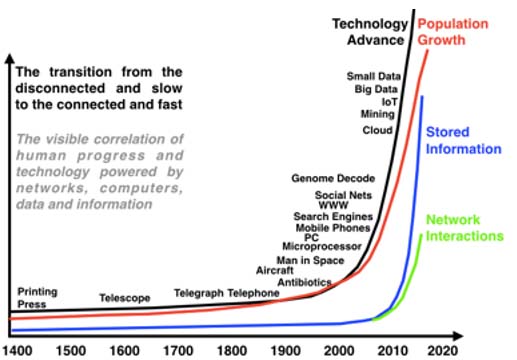
Fig 1: Human progress with technology and data expansion and growth
Industry
Today’s supply chains and production processes are polished versions of their Victorian forebears. Automated, faster, slicker, higher precision, better performance, reduced material and energy; more reliable for sure, but still unable to deliver sustainable futures [13]. That will take for more than a veneer of greater efficiency!
“polishing what we already have will not lead to sustainability, it only delays the point of collapse”
The future demands reductions in material and energy use whilst eradicating much of the distribution, supply and support costs. Human limitations present a need for the application of AI to effectively realise the accepted and widely adopted mantra of “Repurpose, Reuse and Recycle’ [14]. But what purpose all this if old equipment consumes 10W when the new requires less than 1W? Ultimately the route to sustainability has to be driven by all embracing thermodynamic considerations rather than fashion, politics, emotion and belief!
We need to track materials from their point of extraction, through transport and refinement to processing and manufacture, and on to the distributor, seller, buyer/user, support and maintenance organisation, disposal, and full recycling. Tagging, monitoring and communication every mm, cm, m, km of the journey will be necessary [15] with designers, producers and users engaged in a closed loop of creative thinking (Fig 2).
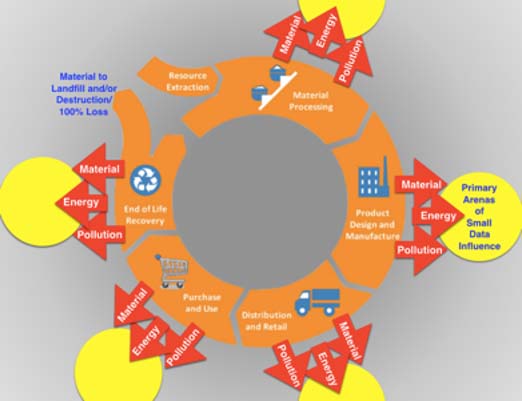
Fig 2: Sustainable futures are more sophisticated and complex than recycling alone
A full record of production and use protects against counterfeit products whilst facilitating spare part recovery and reuse in the face of other failures such as accidents, fire damaged goods, misplaced, rare and hard-to-find items.
The is high-tech cannibalisation!
The farming sector is well advanced in tracking and monitoring technologies for animal care [16] and the maximal use of large plant items with the sharing of combines and other high cost plant items. They also employ sophisticated food mixing to adapt animal diets to weather conditions along with growth, pregnancy, milk production cycles. Such practices are equally relevant to industry where raw materials, machines and facilities can be shared right down to plastics, sheets of metal, specific 3D printers, millers or shapers [17].
In general distributed incursions demand distributed defence and action
Appliances
The average lifetime of radios, TVs, cookers, fridges, freezers, et al is ~7 years during which significant improvements are implemented in successive generations that employ fewer parts, less and better materials, better performance, more built in ‘intelligence’ and of course new time and energy saving production methods. Purchasing, usage and re-placement habits vary by individual and home, region-to-region, but upgrades tend to oc-cur within a repeatable window ~ 5 years.
To date designers, producers, suppliers and maintainers know little or nothing about the user and what they do with their devices, and perhaps worse, recovery and recycling is a often crude and a long way from sustainability. Communicative appliances within a con-tained Small Data IoT (Fig 3) are set to change both sides of this equation [18] and may also transform security [19]. So, here is a seemingly insignificant example: Do you know how much coffee you drink and when? Do you know the cost and the potential benefit, or worse, risk to your health ? Does the manufacturer know you, your needs and irritations with the design? Do they have any pertinent reliability and in the field performance data? The answer across the board has to be a resounding no!
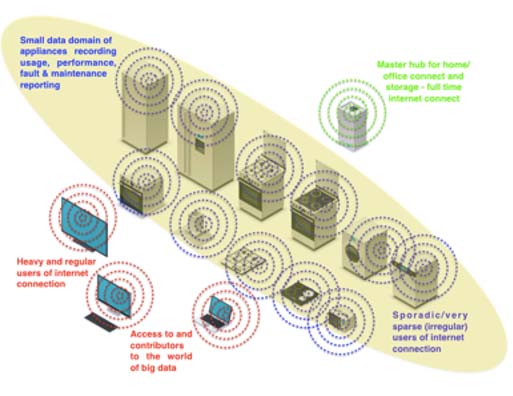
Fig 3: Distinct zones of usage, small and big data applicable to both a domestic/office situation
With the ability to monitor comes an ability to detect likely tech failures ahead of time. Re-porting back to the manufacturer and requesting maintenance action is an obvious step, but how about the suppliers of coffee beans, milk, wash powder and other sundries – will those supply chains become automated too? Hopefully, some choices will remain in our gift as we progress towards programmable homes [20].
Instrumentation
Every healthcare system on the planet is failing for the same reasons! We are not living in the 1940/50s we are in the 21st Century and death by a predictably small number of mechanisms has been supplanted by far longer life spans and a very broad spectrum of progressive organ failures [21].
Countries in the first world have largely exhausted their talent pools of capable people and reached their limit to educate and train enough doctors, nurses and carers [22]. The emerging solutions appear to come in the guise of low cost sensors, automated diagnos-tics and self help solutions. In short; the instrumentation and laboratory capabilities of hospitals are slowly migrating to the doctors office, and on to our bathroom cabinets. Weighing scales, glucose testers, blood pressure and oxidation testers, thermometers, blood flow, respiration devices (and more) are available at a modest cost [23]. In addition, online AI diagnostics already surpass the capability of the average GP. So, we might just become a Star Trek Society for real with the hand held body scanners also under devel-opment and some already demonstrated.
If we now add fully characterised and tagged food, wearable activity and vital signs moni-tors, along with smart toilets that measure/characterise human waste, then we have an almost complete picture. What did we consume? What activities did we participate in – how much energy and fat did we burn – and what is our body and it’s waste output telling us? For our AI Diagnostics, human doctors and hospitals, such a day-by-day history will become a vital element in any future diagnosis process [24].
Early detection, with fast and accurate diagnosis followed by accurate treatment will keep people out of the doctors office and hospital. In turn this reduces further damage and medical risk. Medical errors in the USA result in over 400,000 (digital) death per year. Diagnostic, treatment, and procedural errors in drug and medicine prescription and dosage are the key culprits, and sadly, other countries and heath systems fare no better!
The IoT at every level; from individual, through doctors office and hospital is a fundamental game changer. With every domestic and personal device communicating and contributing data in close proximity the marshalling of data and affording it to some diagnostic engine will demand orchestration [25]. Of course, this picture extends to the instrumentation during any period of hospitalisation and/or visit to the doctors office and totally changes the nature of patient records. We might thus anticipate the prime responsibility and ownership migrating to the individual and away from doctor and hospital. To illustrate this trend consider how many health monitoring apps and test devices you own (Fig 4).

Fig 4: Health monitoring devices and local analysis with near zero need for internet connection
IBM Watson is now superior to human doctors in diagnostics using verbal inputs based on Q&A [26]. The USA pharmacy chain CVS is deploying Watson terminals so customers can ‘self consult,’ get a diagnosis, and a prescription in one visit! But this is only the start. Imagine such a session augmented by all lifestyle and bodily information. So the trick is going to be data aggregation and proximal delivery to a terminal at home, doctors surgery, hospital or Watson terminals in CVS [27]. The only thing we can be certain of is that the Small Data produced, along with the emergent properties, machines and the IoT will take us by surprise, as will healthcare outcomes and revelations.
Vehicles
The automotive industry are progressively equipping vehicles with more intelligence and automated functionality [28]. GPS, road and traffic conditions have been with us for dec-ades along with cruise control, engine and climate monitoring, instrumentation and enter-tainment. Voice control and hands free mobile phone connections are more recent along with cameras, radar, collision avoidance, automated braking, park assist et al. This Small Data environment aligns with the coming IoT. In turn, a domination of short range (direct) car-to-car communication [29] appears to be evolving to create another sector unlikely to see 3, 4, 5G mobile network domination (Fig 5).
We might therefore anticipate pulling in for gas and our vehicle OS and apps being auto-matically upgraded along with the latest maps and traffic information, and perhaps enter-tainment content for the younger members of the family. The engine might wish to report performance data, along with location and journey information. But for the driver of the vehicle the single biggest benefit might well be the latest road and freeway traffic data re-layed directly car-to-car (daisy chain fashion) in real time giving incident data and alternate routing advisories [30]. This would realise higher road use efficiencies with more closely packed vehicles per km that is fundamentally impossible with human drivers [31].
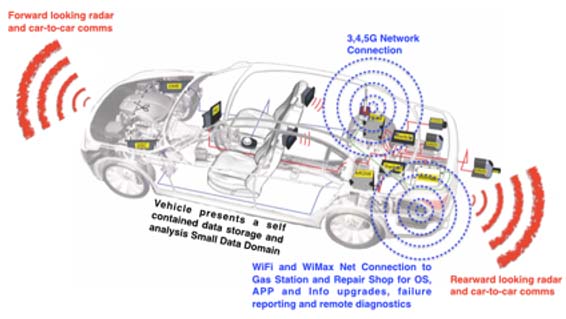
Fig 5: Short range vehicle to vehicle to garage/gas station dominates the Small Data sector
For owners and users of vehicles the IoT and Small Data plus machine intelligence doesn’t just mean a safer and more economic mode of travel, it opens ever more important doors – two of which are: the driverless car and new ownership models [32].
Greater road use, reduced energy costs, fewer vehicles through real time sharing, drastic reductions in accidents, injuries and deaths, along with shorter journey times and a better travel experience may turn out to be but a short list of the pending benefits to be realised. Whilst it is easy to predict what the technology will and can do, the same is not true of people, they always innovate and do surprising things.
Integrated Outcomes
What we know for sure is today’s comms technologies cannot support >50Bn things on line. We simply do not have sufficient energy and the migration to very low power, short distance, localised networks and communications is assured.
Mobile nets currently transport <5% of the internet traffic on 3/4G whilst wifi carries ~55%, with wired LANs support the rest. We contest assert that the future will see most ‘things’ talking to each other in close proximity with only the very occasional need to connect to the wider network – and the use of 3/4G in the IoT will not be as dramatic as expected.

Table 1: The Small Data springboard based on the devices and data available in 2016
On the basis of today’s products we have highlighted known uncertainties in future growth and adoption, and further, note that the likely memory capacities will grow rapidly along with the mix of Small and Big Data created. It is also worth noting that this Table 1 also hints at a covert security future where wearable and personal devices are openly connecting, communicating and radiating. We will all create RF, device, app and information signatures that for exploitation at: ATMs, PoS, vehicle, building access and certification.
In general distributed incursions demand distributed defence and action
Security also embraces ‘authenticity’ in terms of counterfeit and risk avoidance. The full implications of Small Data with automated analysis are far from being realised, but it is clear that it is likely to be far more profound than the simplistic pictures painted by any one sector, manufacturer or potential user group.
References
[1] Han J: Data Mining Concepts and Techniques, Morgan Kaufmann Series, March 2011
[2] Marr B: Big Data: Analytics and Metrics to Make Better Decisions and Improve Performance Feb 2015
[3] Lindstrom M: Small Data: The Tiny Clues That Uncover Huge Trends, Mar 2016
[4] Baesens B: Analytics in a Big Data World: Essential Guide to Data Science, Wiley and SAS Jul 2014
[5] Cochrane P & Moschella D: Networks Without Infrastructure, CSC Leading Edge Forum, March 2015
[6] Shultz G: Cloud and Virtual Data Storage Networking, CRC Press, Sept 2011
[7] Evans D: The Internet of Things Is Changing Everything, Cisco White Paper 2011
[8] Purdy M, Davarzani L: IoT The Growth Game Changer, Accenture Strategy Paper 2016
[9] Boulos M N K, Al-Shorbaji N M: On the IoT, smart cities and the WHO Healthy Cities IJGH, March 2014
[10] Louchez A, Thomas V: E-waste and the Internet of Things, ITU News 2014
[11] Dey A et al: Building sustainability in logistics operations: a research agenda, IINET, 2011
[12] Colliers International: From First mile to Last Mile Global Logistics Trends, October 2015
[13] Panigrahy K, et al Automation of Supply Chain Management in Rourkela Steel Plant, ICECCT 2011
[14] Clancy H, Sustainability execs must learn to love artificial intelligence, GreenBiz.com, 3 Nov 2015
[15] Kanth R K Sustainability of Manufacturing Process with RFID Based Systems, DACS, 12 Dec 2011
[16] Floyd RE, RFID in Animal-Tracking Applications, IEEE Potentials 34/5, Oct 2015
[17] UK Data Tag for Farm and Industrial Machinery, datatag.co.uk/cesar-agriculture.php
[18] Yin Jie, Smart Home System Based on IOT Technologies IEE, ICCIS, Jaune 2013
[19] Palmer D, IoT home appliances leaving users vulnerable to cyber attacks, Computing Nov 2015
[20] Shah N et al, Monitoring Appliances Sensor Data in Home Environment, dehems.eu
[21] WHO, Top 10 causes of death www.who.int/mediacentre/factsheets/fs310/en/
[22] Britland M, In Search of The Perfect Health System, Macmillan, Sept 2015
[23] Elton J et al, Healthcare Disrupted: Next Generation Business Models & Strategies Wiley 2016
[24] IBM Healthcare Industry Solutions Guide, Aug 2015
[25] Islam R et al, The IoT for Health Care: A Comprehensive Survey, Access, IEEE, 2015
[26] Friedman L F, IBM’s Watson May Soon Be The Best Doctor In The World, Business world, April 2014
[27] Jaspen B, CVS & IBM Watson Pursue Ways To Predict Patient Health, Forbes, July 2015
[28] Faezipour M, et al, Progress & Challenges in Intelligent Vehicle Networks, Comms of ACM Feb 2012
[29] Knight W, A simple wireless technology promises to make driving much safer. MIT Tech Review
[30] de Looper C, How vehicle-to-vehicle comms could save (and endanger) lives, TechRadar, 3 Oct 2015
[31] Coelingh E & Solyom S, All Aboard the Robotic Road Train, IEEE Spectrum, 26 Oct 2012
[32] Cairns S & Harmer C, Alternative forms of car ownership across the globe, RAC Foundation 6 Jan 12
From India with love

Reinvigorate Nonviolence in America
Amidst the growing and senseless violence in America, you are invited to join a visionary delegation of leaders from across United States (including Mayors, Chiefs of Police, Superintendents of schools) who will travel to India from January 24-31, 2017. The delegation will focus on studying India’s ancient culture and peace traditions to explore solutions that can be implemented in America to stop the ongoing violence.
During this trip, we will mirror the intention behind the transformative journey that was undertaken by Rev. Martin Luther King Jr., in 1959, when he went to India to deepen his understanding of nonviolence principles as practiced by Mahatma Gandhi. Upon his return, Dr. King wrote: “I left India more convinced than ever before that the method of nonviolent resistance is the most potent weapon available to people in their struggle for freedom and human dignity. As result of my visit, my understanding of non-violence is greater and my commitment deeper.”
Nearly sixty years later, the senseless violence continues – Baltimore, Orlando, Chicago, Cleveland, Washington, D.C., Minneapolis, Dallas, Oakland, Baton Rouge, Milwaukee, Charlotte – the list goes on. Today, violence has truly become an epidemic in America and can affecteveryoneregardlessofoursocial or economic status. For instance, a mass shooting can happen in a neighborhood school, at a bar, in a movie theater or at work. We are looking for leaders, like you, to design innovative solutions that will restore hope, harmony and peace in the communities, neighbourhoods and cities.
Visionary & Curator of the Trip
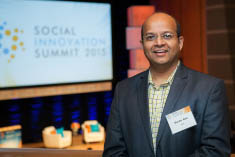
Mandar Apte
Founder, Media Rise Ex-Manager, GameChanger Social Innovation, Shell Oil Co. Producer/Director, Documentary Film “From India With Love”
For more information, contact Mandar:
(USA) 713.449.4536, mandar@mediarisenow.org
The Future Now Show with James M Dorsey 2016 & 2017: Quest for Change
Every month we roam through current events, discoveries, and challenges – sparking discussion about the connection between today and the futures we’re making – and what we need, from strategy to vision – to make the best ones.
December 2016
Keywords
Trans-Pacific Partnership (TPP) / Asian Pacific trading space / US Dollar as a world currency / Donald Trump / Petrodollar / Energy / Electric cars
The Future Now Show
features
Le Corbusier, Chandigarh India
After the partition of Punjab, in 1947 following the independence of India, the divided Punjab required a new capital as Lahore was now in Pakistan. Thus Le Corbusier was commissioned by first prime minister of India, Jawaharlal Nehru to build a new city of Chandigarh as the capital of Punjab and newly carved state of Haryana. The brief for the design was a city “unfettered by the traditions of the past, a symbol of the nation’s faith in the future”. Subsequently, Corbusier and his team built not just a large assembly and high court building, but all major buildings in the city, and down to the door handles in public offices. Today many of the buildings are considered modernist masterpieces, though most are in a state of neglect. In 2010, chairs from the assembly building were auctioned in London; a diplomatic attempt to stop the sale failed, as the items were “condemned” and deemed unfit for use. (wikipedia)
News about the Future
Proposed quantum nano-MRI could generate images with angstrom-level resolution
Similar to the way that a conventional magnetic resonance imaging (MRI) machine uses large magnets to generate 3D images, physicists have developed a proposal for a quantum nano-MRI machine that would use the magnetic properties of a single atomic qubit to generate 3D images with angstrom-level (0.1-nanometer) resolution. The new technique could lead to the development of single-molecule microscopes for imaging biomolecules, with applications in drug discovery and better understanding diseases.

3D printed Jaipur foot prosthetic launches in 4-month pilot project
There is no question that 3D printing technologies are helping to disrupt, democratize, and push forward prosthesis manufacturing. With the increasing ability to create customized, one-off prosthetic aids, many companies and medical organizations hope that 3D printing will help to make limb prosthetics more widely available by reducing both costs and production times. In Mumbai, India, we are seeing evidence of this already, as an effort is being made to revamp the popular “Jaipur foot” rubber-based prosthetic with additive manufacturing technologies.
While 3D printing has been used for other medical purposes in India, primarily for diagnosis and training purposes, the 3D printed Jaipur foot marks the first time that a 3D printed prosthesis will be mass produced for use in India — an achievement that should not be discounted. As Mehta explains, “Our limbs are sent to patients across the country and the world. Thanks to the Google grant, we can remotely take orders from people and deliver it to them.” The 3D printed Jaipur foot will be mass produced in a designated wing at the King George V Memorial complex in Mahalaxmi.
CarTube
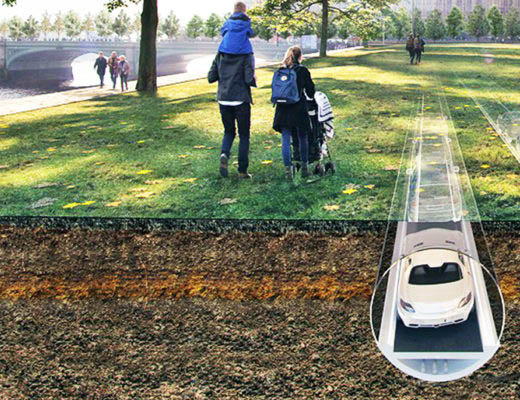
Lars Hesselgren, Director of Research at PLP Architecture is currently leading the research and concept design for Cartube, a pioneering mobility solution which combines two existing modes of transport, automated electric cars and mass transit, into a single, seamless infrastructure system.
Recommended Book: The Quantum Relations Principle

The Quantum Relations Principle
by Hardy F. Schloer, Mihai I. Spariosu
Drawing extensively on the current critical state of affairs at the global level, this book highlights the vital importance of systemic thinking and integrated, transformative knowledge in bringing about a paradigm shift from fragmented, linear ways of thinking to holistic ones, based on the interconnectedness of the web of life. It offers a comprehensive vision and innovative solutions for a sustainable future of our planet, combining traditional wisdom with advanced scientific knowledge and high-end, state-of-the-art information technology. This integration of resources is the premise for the planetary wisdom we so deeply need in order to transform the present global crisis into an opportunity for further human development.
Arctic Resilience Report 2016

by the Stockholm Environment Institute and the Stockholm Resilience Centre
Executive Summary
Introduction
Change – even rapid change – is the norm in the Arctic. But environmental, ecological and social changes are happening faster than ever, and accelerating. They are also more extreme, well beyond what has been seen before. And while some changes, such as warming temperatures, are gradual, others, such as the collapse of ice sheets, have the potential to be not only abrupt, but also irreversible. This means the integrity of Arctic ecosystems is increasingly challenged, with major implications for Arctic communities and for the world as a whole.
The main driver of these changes is human activity, largely outside the Arctic. Climate change caused by greenhouse gas emissions plays a particularly large role, but migration, resource extraction, tourism, and shifting political relationships are also reshaping the Arctic in significant ways. Within the Arctic region, population growth and movement, communication, and shifts in culture and self-government are changing how people live and the livelihoods available to them. Understanding how these changes interact with one another, and what they mean for people and ecosystems alike, requires a holistic approach that looks at human and natural dynamics together.
This report uses the concepts of resilience and social-ecological systems to provide a holistic view of the Arctic. A social-ecological system is the combination of the human and natural systems in any given place: for example, the Skolt Sámi communities in Finland, and the ecosystem that sustains them, including the salmon in the Näätämö River. Resilience, as we define it in this report, is the capacity to buffer and adapt to stress and shocks, and thus navigate and even shape hange. Interest in the concept of resilience has grown dramatically in recent years, and it is featured prominently in the Paris Agreement on climate change, the United Nations’Sustainable Development Goals, and the Sendai Framework for Disaster Risk Reduction, among others. Given the large and rapid changes occurring in the Arctic, resilience is immensely relevant to the people of the Arctic, its ecosystems, and the management and governance or the region’s natural resources. The approach taken in this report builds upon decades of research on social-ecological resilience, and a growing body of knowledge on the Arctic in particular.
This report is the concluding scientific product of the Arctic Resilience Assessment, a project launched by the Swedish Chairmanship of the Arctic Council. The project’s 2013 Interim Report provided the conceptual foundations for this final report, as well as a detailed survey of resilience research in the Arctic to date. This Final Report extends that effort by providing a novel assessment of Arctic change and resilience, including factors that appear to support or weaken resilience. It provides an overview of tools and strategies that can be used to assess and build resilience in the Arctic, and considers how the Arctic Council can contribute to those efforts. We hope the insights presented here will help Arctic nations to better understand the changes taking place in the region, and contribute to strengthening Arctic people’s capacity to navigate the rapid, turbulent and often unexpected changes they face in the 21st century.
Part I: One Arctic, multiple visions, shared responsibility
The fact that the Arctic is changing fast is well known: The extent of sea ice, the condition of the Greenland ice sheet, the unusually warm temperatures are all widely reported – as are the new shipping routes opening up, and the oil exploration efforts. Less prominent, but also reported, are the stories of Indigenous Peoples whose livelihoods are disappearing, or whose villages are becoming uninhabitable.
Yet almost always, the stories (and the studies, policies, and government actions behind them) touch upon just one aspect of Arctic change at a time, missing the big picture. The reality is that changes across the Arctic are closely interconnected. The drivers of change – many of them external to the Arctic – cascade across geophysical, ecological and human elements of social-ecological systems. Because people rarely look at the system as a whole, with all its regional and global connections, we do not fully understand the changes taking place, or what to do about them.
The complexity of the Arctic also makes it challenging to monitor and forecast change – even more so because of the vastness, variety, low population density, and extreme conditions of the Arctic. There are other challenges as well that are equally important: First of all, knowledge that has been developed about the region is often compartmentalized within disciplinary or sectoral boundaries. Indigenous Knowledge, which is crucial to the resilience of many local communities, is often not considered together with scientific knowledge. Although important strides are being made to transcend these divisions, they continue to manifest themselves in much of the discussion of the Arctic, as well as in the organizational structures through which new knowledge is pursued and solutions are developed.
We use the concept of social-ecological systems as a framework for integrating the diverse types of knowledge needed to understand the interactions taking place in the Arctic, and for better understanding how social and ecological systems evolve in concert with one another. Such a framework helps identify common drivers of change, interactions among different processes, and gaps in response strategies, and thus develop more effective approaches to building resilience in the Arctic. A social-ecological systems approach is required to better facilitate resilience-building, a key component of sustainable development.
A key aspect of this approach is that it sees people as a fundamental – and increasingly influential – part of nature. It emphasizes the unique human capacity for agency – for engaging in deliberate action. While we all understand this at some level, our scientific methods often seek to screen out human action and the ways in which it is steered. It is this capacity that not only is accelerating the changes taking place in the Arctic, but also provides the means for purposefully and effectively navigating that change. The challenge in the Arctic is that it requires collective deliberation, decision-making and action by a very wide range of actors, within and outside the Arctic.
Responding to Arctic change: a selection of 25 case studies from across the Arctic were analysed for this report. The cases illustrate both loss of resilience and resilience, including instances of transformational change.
The theme of the US Arctic Council Chairmanship, “One Arctic, Shared Responsibility”, highlights that important reality: The Arctic is a unique, ecologically and economically crucial region for which responsibility must be shared. It is home to many, a source of resources for others, and a key part of a global system of climate regulation. Yet, while there is only one Arctic, diverse Arctic actors define their interests and goals related to the Arctic in very different ways. The Arctic can be perceived through lenses that emphasize security, tourism, extractive industries, nature, or the well-being of Indigenous Peoples. These distinctions are more than matters of philosophy or perception; they have material consequences. Oil and gas extraction may directly conflict with commercial fisheries, and both may be at odds with the subsistence livelihoods of a local community. The clear demarcation of property lines may favour new development, but hinder the seasonal movements of reindeer herders.
If there is only one Arctic, all parties must share responsibility because activities pursued in one place influence what is possible elsewhere. The Arctic can accommodate very diverse pursuits, but only to the extent that they are either compatible, or else separated by enough time and distance. Some activities may conflict at first, but be reconciled if both sides agree on shared goals and mutually acceptable conditions. A key first step in achieving this is to build a common understanding of the ways in which the diverse aspects of the Arctic – social, ecological and biophysical – are intertwined and co-evolve.
Part II: How is the Arctic changing, what forces are driving change, and how are communities responding?
Arctic ecosystems are changing in dramatic ways: ice is melting, sea levels are rising, coastal areas are eroding, permafrost is thawing, and landscapes are changing as the ranges of species shift. People’s lives are changing as well, with new livelihoods, new technologies, increasing connections to the outside world, and new forms of Arctic governance. Resilience enables people and ecosystems to cope with the shocks and stresses associated with these changes, and to adapt and even transform themselves as needed. Yet some changes are so substantial (and, often, abrupt) that they fundamentally alter the functioning of the system: an ecological “tipping point” has been crossed. Scientists call such largely irreversible changes “regime shifts”.
Chapter 3 of the report examines 19 documented or potential regime shifts in the Arctic – from a shift to seaice-free summers, to collapse of different Arctic fisheries, to the transformation of landscapes: from bogs to peatlands, or from tundra to boreal forest or to steppe. These regime shifts are having large impacts on the availability of wildlife, the stability of the climate, and Arctic people’s sense of place and well-being. They affect many ecosystem services that are important to people within and outside the Arctic: from regulating the climate, to providing sustenance (e.g. through fishing).
Our analysis shows that these regime shifts are driven by a variety of forces, most notably human-induced climate change, but also resource exploitation, fishing and tourism, among others. Drivers of change frequently originate from outside the Arctic – for example, the burning of fossil fuels, and decisions related to fishing and mineral exploitation. Others are the result of Arctic people’s own actions.
Our analysis shows that the risk of most Arctic regime shifts is increasing, but the risk of particular regime shifts varies among Arctic nations. While some regime shifts are well known, such as loss of summer sea ice, most regimes shifts are neither widely known nor well understood; far more research is needed. Another key finding is that climate change is an important driver in all the regime shifts. This means that reducing the risk of regime shifts will require strong action to mitigate climate change, not just by the Arctic countries, but by the global community. At the same time, the analysis points to several potential actions within local or national governments’ control that can decrease the risk of regime shifts. Considering the risk of regime shifts when designing natural resource management systems, policies and plans could increase resilience.
Many regime shifts involve similar processes, which means that there is potential for some regime shifts to trigger or increase the risk of other regime shifts occurring. We know that such “cascading” regime shifts can occur, but need to learn more about the extent to which different regime shifts reinforce changes that are under way, or how to mitigate this risk. We also know that the consequences of some of these shifts are likely to be surprising and disruptive – particularly when multiple shifts occur at once. By altering existing patterns of evaporation, heat transfer and winds, the impacts of Arctic regime shifts are likely to be transmitted to neighbouring regions such as Europe, and impact the entire globe through physical, ecological and social connections.
Chapter 4 complements this analysis with a review of 25 case studies of how Arctic communities have responded to change: whether they have demonstrated resilience and adapted or achieved transformational change, or lost resilience. Resilience has always been crucial for people living in the Arctic – and it is even more so amid the rapid changes taking place today. The case study analysis helps us to understand the social, behavioural and ecological processes that are already building (or eroding) resilience in the Arctic.
A systematic comparison of the cases identified four key factors that contribute to resilience: 1) the capacity for self-organization – that is, to make decisions and implement responses to change; 2) diversity of responses to change; 3) the ability to learn from and integrate diverse
types of knowledge; and 4) capacity to navigate surprise and uncertainty. These findings align with previous research on resilience.
The capacity for self-organization is particularly crucial. A resilient community has the ability to come together to effectively identify and respond to challenges, and can resolve conflicts and disagreements. Our analysis showed a decline in the capacity for self-organization was strongly associated with a loss of resilience. Capacities linked to learning, the maintenance of social memory, and learning from crisis were also very important for enhancing resilience.
Some cases provided examples of how people and communities in the Arctic have transformed the way they live and interact with nature and natural resources. For example, the Inuit of Cape Dorset, in Nunavut, Canada, formerly nomadic hunters, have become internationally recognized artists. The fishing community of Húsavík, on Iceland’s Skjálfandi Bay, turned itself into a tourist destination for whale-watching after cod-fishing quotas and a moratorium on whaling ended their traditional livelihoods. The attributes of cases of transformation are similar to those of resilience, but their small number makes it hard to identify more specific shared traits. More research is needed on both successful and unsuccessful Arctic transformations.
Part III: Shaping change
As noted above, the human capacity for deliberate action (i.e. agency) is central to the humans-in-nature perspective of this report. In the Arctic, as elsewhere, people take action as individuals, as communities, and through various organizations. Institutions play a key role in bringing people together to make decisions and to steer their activities. They help define common policy problems, assemble the required knowledge, create rules and norms to guide responses, marshal the needed resources, and facilitate action.
As the Arctic’s sole circumpolar high-level policy forum, the Arctic Council plays an increasingly important role in issues that have major social and environmental implications. Over its brief history it has played a central role in identifying issues of common concern in the Arctic and developing the knowledge necessary to tackle those issues. It has helped devise novel ways of fostering pan-Arctic collaboration, and bridged and brokered between different levels of decision-making. As the Arctic changes, the Arctic Council continues to evolve to meet the region’s needs.
To better understand what engagement with the challenges ahead might look like, Chapter 5 reviews the evolution of shared decision-making in the Arctic, with a particular focus on the Arctic Council’s 20-year history. In Chapter 6 we analyse how the Council has grappled with three global drivers of change that are especially important in the Arctic: transboundary pollution (i.e. across national borders), climate change, and demand for natural resources and its link to extractive industries. The substance and scale of these issues pose very different challenges for the Council, and offer different opportunities.
Amid constant change, the Arctic Council has been able to deal with new challenges by modifying how it works: incorporating new types and forms of knowledge and opening up to new kinds of participation. It has also set new activities in motion – especially when policy problems cannot be managed within national borders. Going forward, it will be important for the Council to continue to be agile and able to evolve with changing needs.
Finding ways to strengthen connections across issues, both in research and in policy, is a key challenge for the Arctic Council and its activities. Studies and debates too often occur within “silos”: focusing on pollution, or culture, or resource extraction, but less on the interconnections between these activities. By more systematically bringing these different perspectives together, the Arctic Council can support the development of more integrated – and more effective – strategies to address trade-offs and, where possible, find synergies. As with other endeavours, the development of knowledge depends on the organizational structure that is in place. A more integrated approach to Arctic research and decision-making will require institutional changes to bring together diverse perspectives and forms of knowledge
Achieving such an integrated approach will likely require building local people’s capacity to engage with a multitude of relevant regional and global processes. It will also require navigating the often-complex allocation of decision-making power among different key actors – no small task in an increasingly dynamic and congested geopolitical context. Another aspect of this effort is to find new ways to connect decision-making activities at the local and international levels.
Organizational learning is a fundamental element of the social response to social-ecological change and thus to resilience. Organizational learning at the level of the Arctic Council has been and will continue to be important as the political landscape evolves and as new knowledge challenges emerge. Arctic decision-making and management systems are currently challenged to respond to rapid change in the region by developing capacities to facilitate the speed and effectiveness of both learning and translating into action.
The basis for decision-making structures and management strategies focusing on the Arctic plays a central role in shaping how Arctic people can influence and are influenced by internal and external changes in climate, ecosystems, politics or economics. As a process of shared deliberation and decision-making, such structures and strategies play a central part in shaping continuity and change by defining goals, who and which knowledge gets considered in decisions, and who owns and has access to Arctic land, seas and resources.
Part IV: Building resilience
Resilience can be cultivated and strengthened. If we understand the key components of resilience, and the extent to which they are present in a given context, we can target activities to enhance each component and fill any gaps. One way to think of these components is as forms of capital; the Interim Report identifies seven types as crucial to resilience: natural capital, social capital, human capital, infrastructure, financial capital, knowledge assets and cultural capital.
These elements are interlinked and should be viewed as “bundles” of resources that complement one another, in different combinations, depending on the context. For example, a community looking to adapt to change by developing tourism might draw on natural capital (wildlife, the beautiful landscape), cultural capital (Indigenous People’s culture and art), financial capital (money for renovations and new amenities), infrastructure (e.g. roads, a port), and social capital (connections within the community and with outsiders who can help attract tourists).
Efforts to measure and monitor these components of resilience in the Arctic are only in their early stages. Our research highlights the need to develop indicators that could be used to monitor and assess the status of different aspects of adaptive and transformative capacity and how they are developing over time. Such a system could be used for evaluating different policy options and how their outcomes influence resilience.
Yet while the bundles of resources are important preconditions for successful adaptation, they are not enough. Adaptive capacity needs to be activated, and in the Arctic context, significant barriers often arise. Two key factors for activating adaptive capacity are enabling institutions and a social and environmental space that allows for flexibility. For instance, reindeer herders have traditionally used migration as a way to cope with unfavourable grazing conditions in any one place; as government policies and industrial development restrict their mobility, they have less capacity to adapt.
A number of Arctic Council initiatives have already contributed to building resilience and adaptive capacity in the region. It has played a crucial role in building knowledge assets, particularly with regard to the Arctic’s natural capital, and in shaping policies on natural resources. For example, the Arctic Climate Impact Assessment helped set the stage for action by providing an in-depth review of the implications of climate change for Arctic people, and by including local and Indigenous Knowledge. The Arctic Council has also helped to build social capital, by providing a forum for international political cooperation, and by enabling new knowledge networks in connection with producing scientific assessments. It has also played some role in building human capital, indirectly supporting education in the Arctic by building knowledge assets that have served as the basis for new educational activities.
The Arctic Council has taken initiatives to strengthen infrastructure for search and rescue and oil spills, but more remains to be done in addressing this key aspect of adaptive and transformative capacity. Similarly, there is a crucial need for support of research to understand how Arctic economies are changing, and how the formal economy and the availability of financial capital affect both households’ incomes and well-being, and communities’ capacity for adaptation.
The final chapter of the report focuses on how to translate the concept of resilience into action in the Arctic. A key starting point is to understand what we mean by resilience: the concept means different things in different contexts, and can be laden with judgements about whether systems are fragile or strong, and whether change is desirable or not. In practice, the best way to think about resilience is to think of navigating change as a complex process of identifying the desirable features of a system and strengthening them, while letting other features become weaker to allow for change.
We identify six basic “rules of thumb” – heuristics – for evaluating activities, programmes, practices and/or strategies in terms of their likely contribution to support resilience-building. They are:
1) Are the goals clear?
2) Are multiple kinds of knowledge being integrated?
3) Areplace-based community partnerships being supported?
4) Are linkages being made across scales?
5) Is social learning being facilitated?
6) Is culture being taken into account?
We also identify several practices and strategies that can be used to build resilience in the Arctic. The first is to monitor the status of social-ecological systems and how they are changing. Closely related to this are two other practices: tracking and learning from regime shifts, and undertaking resilience assessments. Model simulations – particularly agent-based models, which incorporate the motivations of different actor types – can help decision-makers to understand the implications of different policy options. Participatory scenario analysis is another valuable tool that can provide a platform for addressing and bridging different approaches to knowledge, world views, and values. “Decision theatres” – large, shared visual spaces for exploring an issue collaboratively – are a promising new option. Developing regional and global strategies to build resilience is a valuable approach as well.
Resilience practices are most effective when they avoid panaceas or one-size-fits-all solutions, as these almost always undermine rather than enhance resilience. Instead, there is a need for experimentation and innovation to benefit from insight of theory as applied with the conditions of specific contexts. Resilience-building needs to be a multi-scale enterprise, sensitive to power imbalances, issues of justice (and injustice), and local-level needs. Bottom-up and top-down approaches are needed, and should both have good communication flows, well-articulated and coordinated actions, and high responsiveness.
Institutions will play a key role in building resilience in the Arctic. Informal institutions, such as communities of practice, shadow networks, and boundary organizations can be powerful forces of change when there are no formal arrangements to address a problem. Formal institutions such as the Arctic Council are crucial as well, as they can help establish and support resilience-building programmes.
The Arctic is undergoing rapid and dramatic changes. Building resilience is an urgent, immediate need across the region, and while the challenges of Arctic change are great, the people of the North have a long history of successfully navigating uncertainty and fluctuating conditions. Living in one of the world’s most variable biomes means that people of the Arctic, and in particular the Indigenous Peoples of the Arctic, know a great deal about resilience. But the current scope and pace of change means they cannot do it alone. The resilience of Arctic communities and ecosystems depends not only on the commitment and imagination of Arctic people, but also on the active support of Arctic countries’ governments and other partners. Most of all, the people of the Arctic need support to organize, define challenges in their own terms, and find their own solutions, knowing that they will have the flexibility and external backing to implement their plans.
Futurist Portrait: Robin Hanson
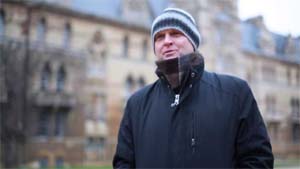
Robin Hanson, is an associate professor of economics at George Mason University and a research associate at the Future of Humanity Institute of Oxford University. He is known as an expert on idea futures and markets, and he was involved in the creation of the Foresight Institute’s Foresight Exchange and DARPA’s FutureMAP project. He invented market scoring rules like LMSR (Logarithmic Market Scoring Rule) used by prediction markets such as Consensus Point (where Hanson is Chief Scientist), and has conducted research on signalling.
Oxford University Press published his book The Age of Em: Work, Love and Life When Robots Rule the Earth in June 2016, and will publish The Elephant in the Brain, co-authored with Kevin Simler, in September 2017.
Robin: “I have a passion, a sacred quest, to understand everything, and to save the world. I am addicted to “viewquakes”, insights which dramatically change my world view. I loved science fiction as a child, studied physics and artificial intelligence for a long time each, and now study economics and political science — all fields full of such insights. Unfortunately, this also means I am tempted to leave a subject when I have mastered its major insights.”
Robin: “The future is not the realization of our hopes and dreams, a warning to mend our ways, an adventure to inspire us,nor a romance to touch our hearts.The future is just another place in spacetime.Its residents, like us, find their world mundane and morally ambiguous relative to the heights of fiction and fantasy.”




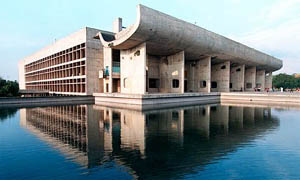
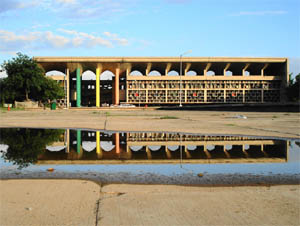
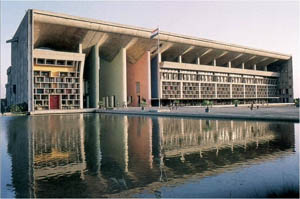
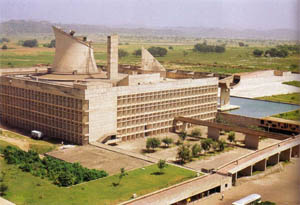






Customer Reviews
Thanks for submitting your comment!